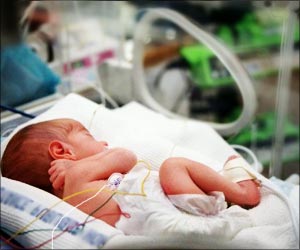Machine learning, or artificial intelligence, helps detect lymphedema among breast cancer survivors by using real-time symptom reports. This detection tool is made by experts at the New York University.

‘Artificial intelligence can now detect ‘lymphedema,’ a condition that causes swelling of the arms and legs among breast cancer survivors.’





Lymphedema is a build-up of lymph fluid that causes swelling in the arms or legs and is commonly caused by the removal of lymph nodes as part of cancer treatment. It can occur immediately after cancer surgery or as late as 20 years after surgery; a recent study found that more than 41 percent of breast cancer patients experienced lymphedema in their arms within 10 years of their surgery. Lymphedema is one of the most dreaded adverse effects from breast cancer treatment because of its chronic nature and debilitating symptoms, including arm swelling, heaviness, tightness, achiness, stiffness, burning, and decreased mobility. While there is no cure for lymphedema, early detection and intervention can reduce symptoms and keep it from worsening, although early detection remains a challenge.
"Clinicians often detect or diagnose lymphedema based on their observation of swelling. However, by the time swelling can be observed or measured, lymphedema has typically occurred for some time, which may lead to poor clinical outcomes," said Fu.
"In our digital era, integrating technology into health care has led to advances in detecting and predicting various medical conditions," said Yao Wang, PhD, professor of electrical and computer engineering at NYU Tandon School of Engineering and the study's coauthor.
A type of artificial intelligence, machine learning is of interest to researchers due to its ability to construct algorithms that continually improve predictions and generate automated knowledge through data-driven predictions or decisions with incoming data--in this case, symptom reports. Machine learning is particularly beneficial when there are many relevant factors that are not independent, which is true for lymphedema symptoms.
Advertisement
Statistical and machine learning procedures were performed for data analysis. Five different classification algorithms of machine learning were compared: Decision Tree of C4.5, Decision Tree of C5.0, gradient boosting model, artificial neural network, and support vector machine. The algorithms were also compared with a conventional statistical approach that determines the optimal threshold for the symptom count based on the receiver operating curve.
Advertisement
"Such detection accuracy is significantly higher than that achievable by current and often used clinical methods," said Fu.
The researchers note that conducting such real-time lymphedema assessment encourages patients to monitor their lymphedema status without having to visit a healthcare professional. Based on patients' symptoms and resulting risk for lymphedema, the assessment system could alert patients at risk to schedule in-person clinical visits for further evaluation. This may lessen the burden of unnecessary clinical visits on patients and the healthcare system.
"This has the potential to reduce healthcare costs and optimize the use of healthcare resources through early lymphedema detection and intervention, which could reduce the risk of lymphedema progressing to more severe stages," Fu said.
Source-Eurekalert















